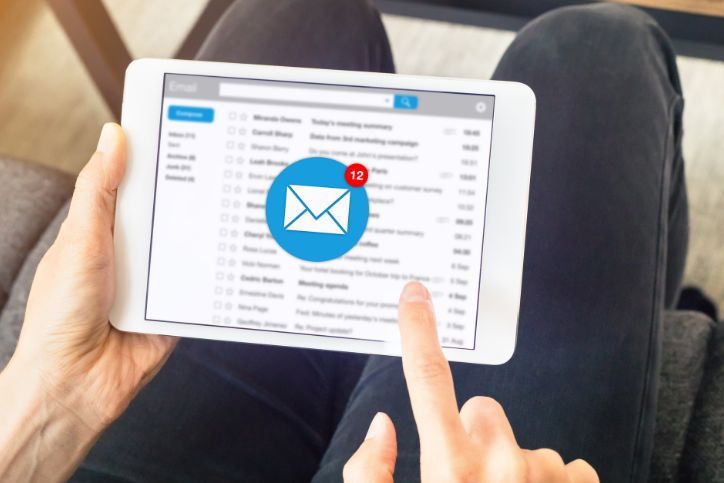How to Spot a Phishing Email Before It’s Too Late

In today’s digital age, the threat of phishing emails looms larger than ever, targeting unsuspecting individuals and businesses alike. These deceptive messages are crafted with precision, designed to extract sensitive information or spread malware. As cybercriminals become increasingly sophisticated, it’s imperative to stay one step ahead. Whether you’re a seasoned tech professional or someone who casually checks their email, understanding how to identify these fraudulent emails is crucial in safeguarding your personal and financial information. In this blog post, we will delve into the telltale signs of phishing attempts and provide actionable tips to protect yourself from falling victim to these scams. By the end, you’ll be equipped with the knowledge to spot a phishing email before it’s too late. Stay tuned as we explore this critical topic in depth, ensuring your online safety and peace of mind.
Table of Contents
ToggleRecognizing Common Phishing Email Tactics
Phishing emails have become a sophisticated tool in the cybercriminal’s arsenal, exploiting the trust and familiarity of digital communication. Recognizing these deceptive tactics is an essential skill in the ongoing effort to protect your personal and financial information. At Geeks2You, we understand the challenges posed by these threats and are committed to helping you navigate them effectively.
One common tactic used by phishers is the creation of a sense of urgency. Emails may mimic those from reputable companies, urging you to address an issue with your account immediately. These messages often include links to fraudulent websites that closely resemble legitimate ones. To counter this, always verify the sender’s email address and hover over links to check their authenticity before clicking.
Another prevalent strategy involves emotional manipulation. Cybercriminals may exploit emotions by pretending to be a friend in distress or offering incredible deals that seem too good to be true. It is crucial to maintain a healthy level of skepticism and independently verify any such claims through trusted channels. This vigilance can prevent you from falling prey to these manipulative tactics.
Moreover, phishing emails frequently contain attachments that, when opened, unleash malware onto your system. Always exercise caution with unexpected attachments, even if they appear to come from a known contact. Utilizing robust anti-malware software and keeping it updated can offer an additional layer of protection.
At Geeks2You, we emphasize the importance of continuous education and awareness in combating phishing threats. By familiarizing yourself with these common tactics and staying informed, you can significantly enhance your defenses against these cyber threats.
Identifying Red Flags in Email Content
Building on our exploration of phishing email tactics, it’s vital to sharpen your skills in identifying red flags within email content. Phishing emails often masquerade as legitimate communication, but several subtle indicators can help you distinguish the real from the fake. By honing your ability to recognize these signs, you can protect yourself from potential scams and data breaches.
First, scrutinize the language and tone used in the email. Phishing emails frequently contain spelling and grammatical errors, which may seem unusual for communication from reputable companies. Additionally, pay attention to the greeting; a generic salutation such as “Dear Customer” instead of your name can be a warning sign.
Next, assess the email’s content for inconsistencies or requests for sensitive information. Legitimate organizations will never ask for your password, social security number, or credit card details via email. If an email requests such information, it’s a clear red flag. As we previously discussed, maintaining a skeptical mindset and verifying the legitimacy of these requests through official channels is crucial.
Another important red flag is the presence of unexpected attachments or links. Even if an email appears to come from a known contact, approach any unexpected attachments with caution. As previously mentioned, malware can be unleashed through these means. Always confirm with the sender through a separate communication method before opening any attachments.
Finally, evaluate the sender’s email address for authenticity. Phishers often use email addresses that closely resemble those of legitimate companies but may contain slight variations or misspellings. Hover over the sender’s address and links to verify their authenticity before engaging further. By staying vigilant and informed, you can effectively identify and respond to these red flags, fortifying your defenses against phishing threats.
How to Verify Sender Authenticity
In our ongoing effort to arm you against phishing threats, verifying the authenticity of an email sender is a crucial step. Here are five actionable tips to help you determine whether the sender is genuine or a potential cybercriminal.
1. Check the Sender’s Email Address
One of the first steps is to scrutinize the sender’s email address. Phishers often use addresses that mimic legitimate ones but with subtle differences or misspellings. Carefully hover over the sender’s name to reveal the full email address. If it appears suspicious, do not interact further.
2. Assess the Domain
Legitimate organizations typically use their own domain names for official communications. Be wary of emails coming from free email providers like Gmail or Yahoo, especially if they claim to be from a reputable company. Cross-reference the domain with official websites or contact the organization directly if in doubt. This method aligns with our earlier advice on verifying links and email authenticity.
3. Look for Digital Signatures
Many companies now use digital signatures to authenticate their emails. A valid digital signature provides assurance that the email has not been tampered with and confirms the sender’s identity. Check for a digital signature icon or header indicating the email’s authenticity. This extra layer of security complements other strategies we’ve discussed, such as evaluating email content for red flags.
4. Verify Through Alternate Channels
If you receive an email that raises suspicions, verify its legitimacy through a separate communication channel. Contact the sender directly using a phone number or email address obtained from the company’s official website, not the one provided in the suspicious email. This step is crucial in maintaining a skeptical approach to unexpected requests for sensitive information.
5. Utilize Anti-Phishing Tools
Employing robust anti-phishing software can help detect and flag potentially fraudulent emails. These tools analyze incoming emails for known phishing characteristics and provide warnings before you engage with suspicious content. Keeping your software updated is essential, as it enhances your overall defense strategy against phishing threats.
By adopting these verification practices, you can significantly enhance your ability to discern legitimate emails from phishing attempts. Remember, staying informed and vigilant is your best defense in safeguarding your personal and financial information.
Steps to Protect Yourself from Phishing
As we continue to fortify our defenses against the pervasive threat of phishing, it’s essential to implement specific steps to protect yourself from these cyber threats. By combining awareness with practical measures, you can significantly reduce your vulnerability to phishing emails and protect your personal and financial information.
1. Stay Informed and Educated
Knowledge is your first line of defense. Regularly update yourself on the latest phishing tactics and trends. Participate in cybersecurity training sessions if available, and encourage your organization or community to do the same. Staying informed will help you recognize and respond to phishing attempts more effectively.
2. Implement Strong Email Security Practices
Utilize email filters to block suspicious emails before they reach your inbox. Ensure your email provider has robust spam filtering capabilities and adjust settings to maximize protection. Regularly update your passwords and use multi-factor authentication for an added layer of security.
3. Be Cautious with Links and Attachments
As we discussed earlier, phishing emails often contain malicious links or attachments. Always hover over links to verify their destination and avoid clicking on anything that seems suspicious. If an attachment is unexpected, verify its legitimacy with the sender through a separate communication channel before opening it.
4. Use Anti-Phishing Software
Invest in reliable anti-phishing software that can detect and block phishing attempts. Such tools analyze incoming emails for known phishing characteristics and provide real-time alerts. Keeping this software updated ensures that you are protected against the latest threats.
5. Report Suspicious Emails
If you encounter a phishing email, report it to your email provider and relevant authorities. This not only helps protect you but also assists in preventing others from falling victim to similar scams. Reporting these threats contributes to the broader effort of combating cybercrime.
By adopting these proactive measures, you can enhance your resilience against phishing threats. As always, remain vigilant and skeptical of unsolicited communication, and make use of available resources to stay one step ahead of cybercriminals. Your commitment to ongoing education and vigilance is paramount in safeguarding your digital life.
Final Thoughts On Spotting Phishing Scams
In today’s digital landscape, the threat of phishing emails is both pervasive and evolving, demanding vigilance from all of us. Throughout this post, we’ve explored how cybercriminals exploit trust through urgency, emotional manipulation, and malicious attachments. By recognizing these tactics, identifying red flags within email content, and verifying sender authenticity, you can significantly fortify your defenses against phishing attempts.
Implementing strong email security practices and using anti-phishing tools are crucial steps in protecting your personal and financial information.
Remember, your proactive measures today are the best defense against the cyber threats of tomorrow. Stay vigilant, stay informed, and partner with experts like Geeks2You who prioritize your digital safety.
Frequently Asked Questions
What are the common signs of a phishing email?
Phishing emails often display several telltale signs that can help in identifying them. One of the most common indicators is the presence of spelling and grammatical errors within the email, which are unusual for reputable company communications. Additionally, phishing emails frequently use generic greetings like “Dear Customer” rather than addressing you by name. They may also contain urgent requests for action, such as verifying account information, and often include links that lead to fraudulent websites. Be cautious of unexpected attachments, as they might contain malware. Always verify the sender’s email address and hover over links to check their authenticity before clicking.
How can I verify the authenticity of an email sender?
Verifying an email sender’s authenticity involves several steps. First, scrutinize the sender’s email address for subtle misspellings or variations that mimic legitimate addresses. Check the domain used; reputable companies typically use their domain names. Look for digital signatures that confirm the sender’s identity. If an email raises suspicions, verify its legitimacy through separate communication channels, such as official contact details from the company’s website. Additionally, employing robust anti-phishing tools can help detect and flag fraudulent emails, enhancing your ability to discern legitimate communications from phishing attempts.
Why do phishing emails often contain urgent requests?
Phishing emails frequently leverage a sense of urgency as a tactic to manipulate recipients into acting quickly without thoroughly analyzing the content. By creating a false sense of immediacy,such as claiming an account is at risk or an offer is about to expire,cybercriminals exploit human psychology to bypass rational decision-making processes. This urgency can lead individuals to click on malicious links or provide sensitive information hastily. To counter this strategy, maintain a skeptical mindset, and verify any urgent claims through official channels before taking action.
How should businesses train employees to recognize phishing emails?
Businesses should implement comprehensive training programs to equip employees with the skills to recognize phishing emails. Training sessions should include educating employees on the common characteristics of phishing emails, such as spelling errors, generic greetings, and unexpected requests for sensitive information. Encourage skepticism towards unsolicited emails and reinforce the importance of verifying suspicious communications through trusted channels. Additionally, simulate phishing attacks to test employees’ awareness and response strategies. Regularly update training materials to reflect evolving phishing tactics and promote the use of anti-phishing tools to bolster email security.
Instant Quote
Get A FREE Quote IMMEDIATELY
Other Blogs You May Be Interested In
Categories
Satisfaction Guaranteed
Computer Repair You Can Trust










